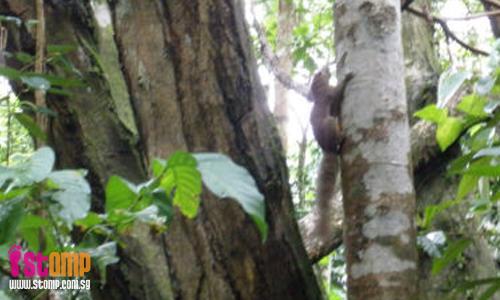
STOMPer Jungle Man would like to share these pictures he took of the interesting wildlife at Bukit Timah Nature Reserve with fellow STOMPers.
In an email to STOMP today (Jul 6), the STOMPer says:
"These pictures were taken at the Rifle Range Trail of the Bukit Timah Nature Reserve.
"The squirrel is a small furry animal that jumps from tree to tree. Last Sunday I saw this squirrel clambering up a rambutan tree and a durian tree.
"It plucked a rambutan and then sat down on a branch with its hind paws grappling the branch.
"With the front paws holding the fruit, it bites into the skin and eats the juicy pulp effortlessly.
"In another picture, you’ll see a half-eaten durian lying on the forest floor. This provided a good meal for the ants.
"Some ripened rambutans dropped onto the forest floor after a shower of rain.
"In another picture is an insect with a black body. Its crimson wings have two saw-tooth antennae.
"The last picture shows a white and brown bracket fungus growing well on dead tree trunks."
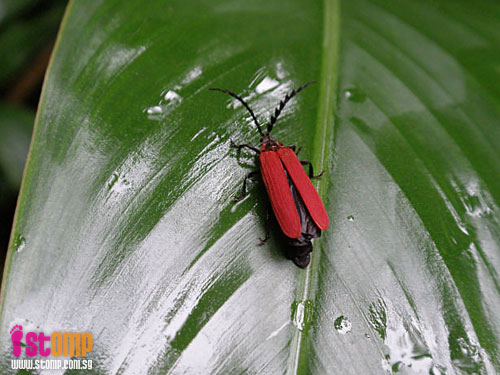
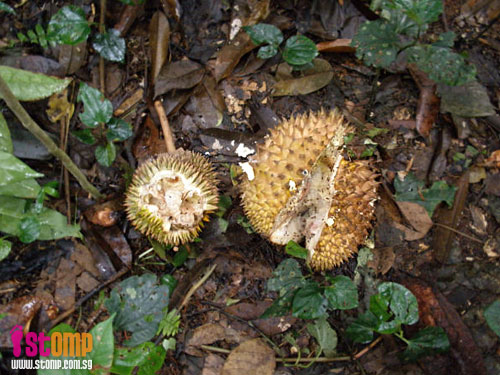
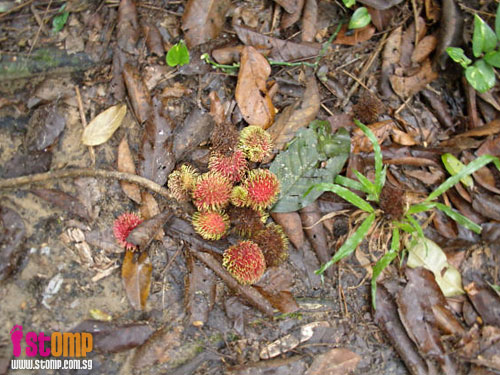
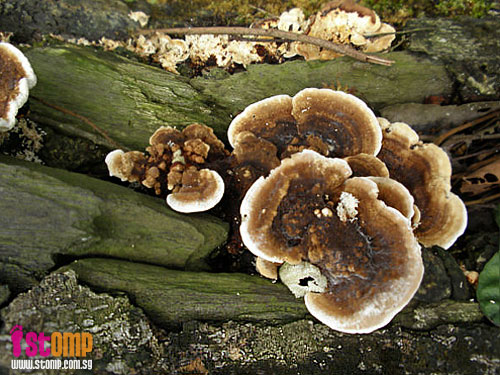
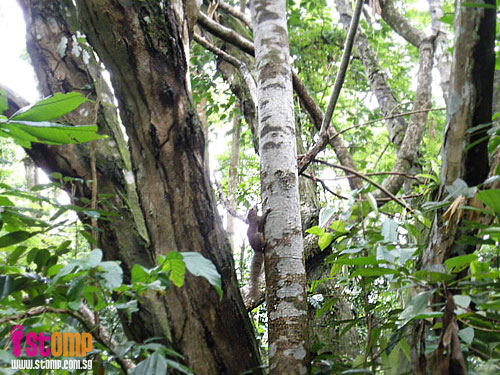
The squirrel in the photo is the plantain squirrel (Callosciurus notatus), which is the species most likely to be encountered here in Singapore. It's widespread and common, even in urban housing estates. The stripes on the flanks and the reddish belly distinguish it from all the other squirrel species in Singapore.

Plantain squirrel, Singapore Botanic Gardens;
(Photo by mjmyap)
Another squirrel species that is quite commonly encountered is the little slender squirrel (Sundasciurus tenuis), around half the size of the plantain squirrel. This species is restricted in its distribution, being found largely in the forested areas of the Central Nature Reserves and Singapore Botanic Gardens.

Slender squirrel, Upper Peirce;
(Photo by hiker1974)
A relative of the plantain squirrel, the variable squirrel (Callosciurus finlaysoni) is not a native of Singapore, being found in south Vietnam, Cambodia, Laos, Thailand and eastern Myanmar. True to its common name, there is a great deal of geographic variation within this single species; depending on the subspecies and the location, the colours can range from entirely black to reddish-brown to grey to white. Since the early 1990s, a population belonging to the subspecies bocourti from central Thailand has become established in Singapore, largely in the Woodleigh area. It's not known what possible ecological impacts might occur as a result, especially if the squirrel manages to spread to more parts of Singapore.

Variable squirrel, Bidadari Cemetery;
(Photo by hiker1974)
Singapore's other squirrel species are much more elusive, and rarely if ever spotted. The shrew-faced ground squirrel (Rhinosciurus laticaudatus) is restricted to the forests of the Central Nature Reserves, as are the red-cheeked flying squirrel (Hylopetes spadiceus) and Horsfield's flying squirrel (Iomys horsfieldii). The red-cheeked flying squirrel, known only from Bukit Timah Nature Reserve, was first recorded locally only in 1996.
Unfortunately, the three-striped ground squirrel (Lariscus insignis) is thought to be extinct in Singapore, while the fate of our 2 giants of the squirrel world looks bleak.
The story of the cream-coloured giant squirrel (Ratufa affinis) is especially tragic, considering that the species was first described by Sir Stamford Raffles, and was once quite common throughout Singapore. In fact, it was often caught as a pet or for food up to the late 1960s. Deforestation seems to have been the main cause of the squirrel's decline; it appears that it was eventually restricted to the forests of Bukit Timah and the Central Catchment Area. With a frightfully small population (estimates of the total population in Singapore range from a mere 2 to 10 individuals), it's clear that even if the squirrel hasn't already gone extinct in Singapore (it was last sighted in 1995), it's just about nearly so.
Less is known about the red giant flying squirrel (Petaurista petaurista) in Singapore. This species was last recorded in 1986, so it's possibly already extinct. However, its nocturnal nature and shy habits mean that there is a chance that it still survives in our forests.
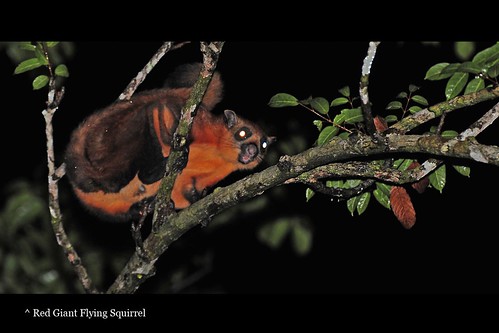
Red giant flying squirrel, Langkawi;
(Photo by kwokwai76)
Not to be mistaken for a squirrel is the common treeshrew (Tupaia glis), a mammal that's actually much more closely related to primates than rodents.
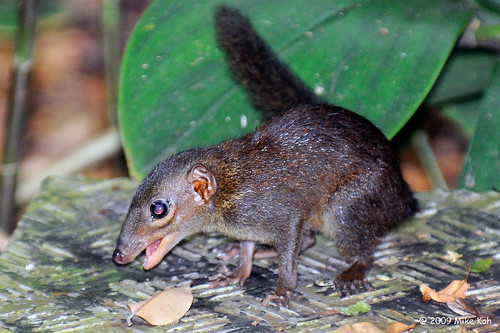
Common treeshrew, Singapore Botanic Gardens;
(Photo by astro08)
Similarly, the Malayan colugo (Galeopterus variegatus), another distant primate relative, is not to be mistaken for a flying squirrel.

Malayan colugo, Central Catchment Area;
(Photo by Lip Kee)
In a completely unrelated vein, the insect pictured above is a net-winged beetle. Net-winged beetles belong to the family Lycidae, and many species feed on nectar as adults. Most species are brightly coloured in hues of red or orange, signaling that they are toxic and distasteful. They're related to fireflies, among many other beetle families.
Here's a picture of the long-nosed lycid beetle (Porrostoma rhipidius), an Australian species, for comparison.

Long-nosed lycid beetle, Victoria;
(Photo by Wimm/WL)